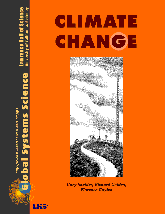Temperature Scales

{ Climate Change Contents } { All GSS Books }
Celsius (or centigrade) is the temperature scale used by scientists, while Fahrenheit is the scale used by most nonscientists in the United States. Since this book is about global systems science, we have used the Celsius scale throughout. However, it is very easy to convert from one scale to the other.
Conversion Formulas
F° = C° x 9/5 + 32
C° = (F° – 32) x 5/9
For example, between 1961 and 1990, the annual average temperature for the globe was around 14.0°Caccording to the World Meteorological Organization. To find out what that temperature is on the Fahrenheit scale, multiply 14.0 by 9, divide by 5, and add 32. The average global temperature between 1961 and 1990 on the Fahrenheit scale was 57.2°F.
The Kelvin temperature scale
The theory that heat is the motion of molecules leads to the concept of absolute zero. As matter loses more and more heat, molecular motion slows down until at some point molecular motion stops. The temperature at which that point is predicted to occur is called absolute zero, which is -273°C. The Kelvin temperature scale has degree increments that are the same as those in the Celsius scale, but absolute zero is designated as the zero point of the Kelvin scale. The freezing point of water on the Kelvin scale is 273 K. Although very cold temperatures have been reached in laboratories, absolute zero has never been achieved, and it is probably impossible to do so.

